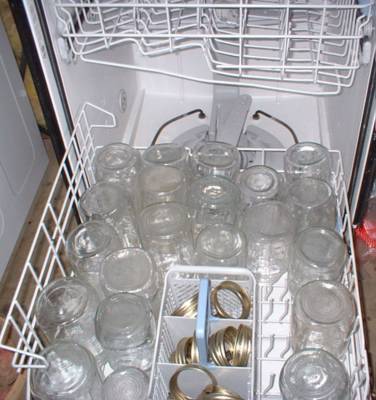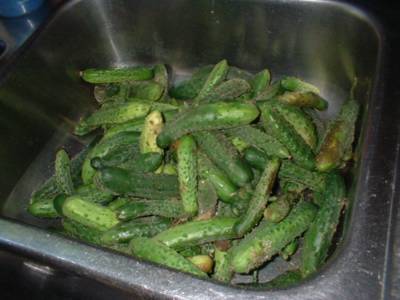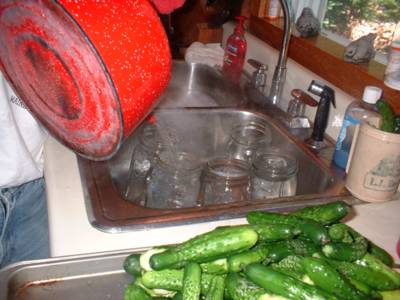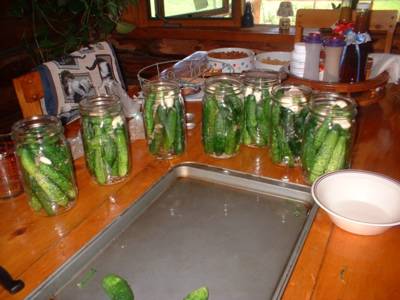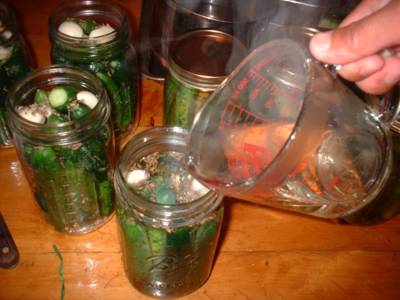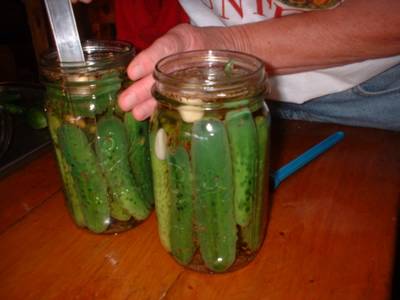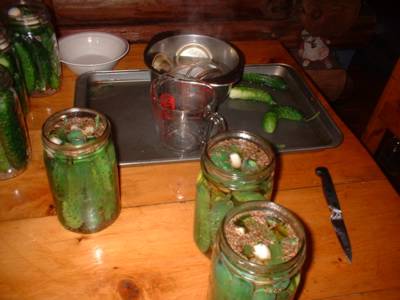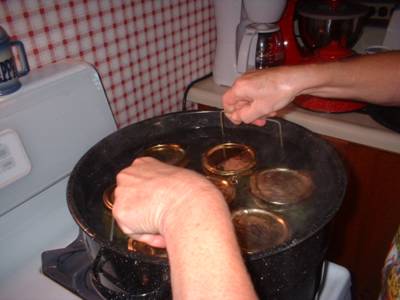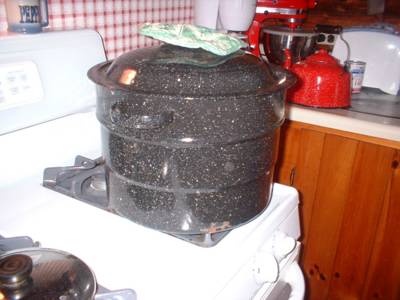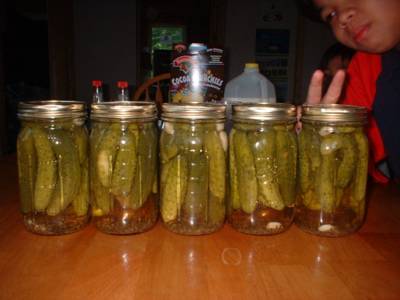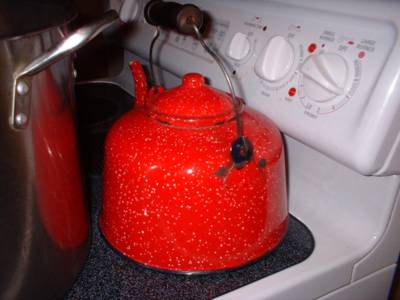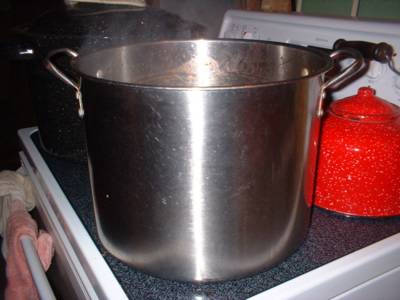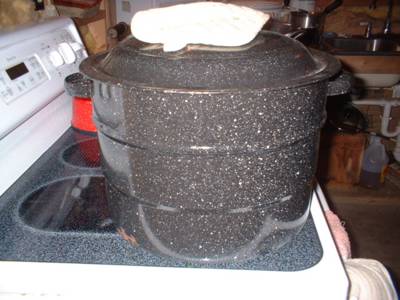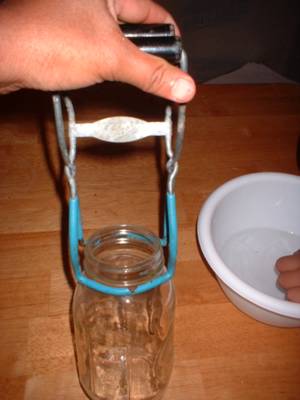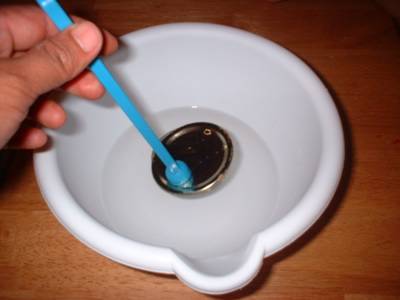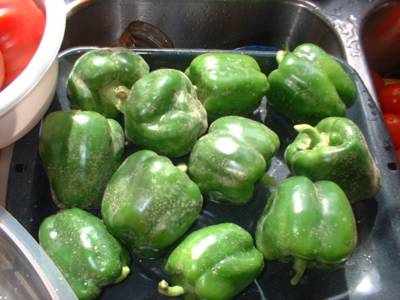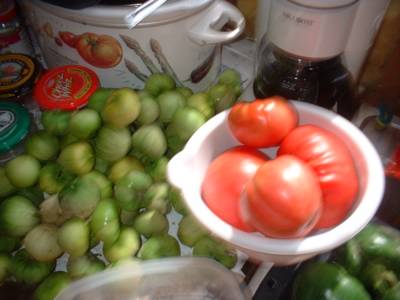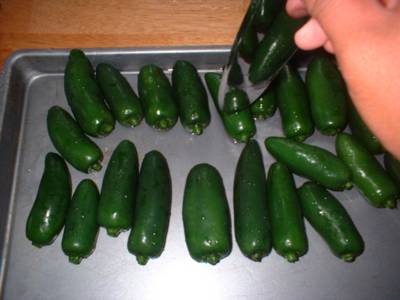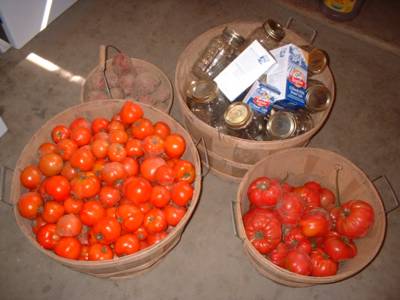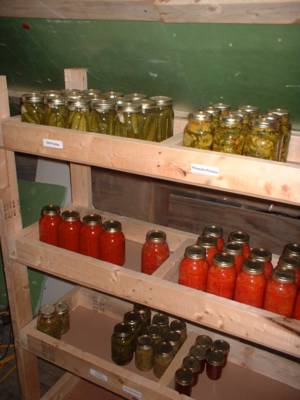Ingredients:
Tomatoes (I used 8-10 of these medium-sized tomatoes per quart jar)
Instructions:
Before starting with the produce, always wash the jars first with hot soapy water, then fill to the brim with boiling water. Empty just before filling with the produce to be canned. Some recipes call for the jars to be sterilized. Procedure for such sterilization techniques are also provided for in the canning links. During the whole procedure, refrain from touching anything aside from the produce and canning materials. Whenever you have to touch other things (e.g. camera, canning book, your hair or oily face, etc) or if you have to go to the bathroom, always wash your hands again before going back to canning.
1. Wash tomatoes. Dip in boiling water (blanch) for 30 to 60 seconds or until skins split, then remove.
2. Slip off skins; trim away any green areas; cut out core. Leave tomatoes whole or cut into halves or quarters, depending on size.


3. Pack tomatoes into hot jars until space between tomatoes fills with juice, leaving 1/2-inch headspace. (Don't be afraid to push the tomatoes downward; just make sure your hands are clean.)
4. Wipe jar rim clean with clean damp cloth or paper towel. Place lid on jar with sealing compound next to glass. Screw band down evenly and firmly until a point of resistance is met - fingertip tight.


5. Process pints and quarts 1 hour and 25 minutes in a boiling-water canner. (That's as per Canning Resources' procedure. Start timing when the water has boiled vigorously. You can lower the heat as long as water continuously boils vigorously.) Avoid opening the canner while processing; otherwise, you lose heat everytime.
(My Mom only processes her pints 30 minutes and the quarts 40 minutes. Never had any problems with that shorter time. We figure it must be that she properly observes sterile technique in canning.)


6. Upon processing. carefully lift the jars out of the canner one by one, avoiding banging the jars with one another (which can crack the very hot jars).
7. Place the hot jars on a towel at least 1 inch apart.


8. Cover and LEAVE ALONE for at least 3 hours, after which you can check for proper seal. (Those which did not seal will have to have their lids replaced then reprocessed, or store in the fridge and use within 2 weeks. You may also opt to freeze, then thaw before use for cooking.) Don't move them for at least 12 hours after processing.
9. After 12 hours or so, label them ("Tomatoes - whole, packed in own juice, [date]") then store in a cool and dark place and use within one year.

These tomatoes can be used for recipes calling for stewed tomatoes. My in-laws and hubby always called them stewed tomatoes, although now, after educating myself about canning, I realized they are not so. We have used these for lasagna recipes, for caldereta, fish sarciado, escabeche, and other yummy tomato-based dishes. I have also used it for making sweet-and-sour sauce, substituting it for water and tomato paste called for. When I have leftover mac&cheese, I reheat it with half a jar of these tomatoes, then add leftover sauteed ground beef. It sure is advantageous and cheaper to have access to these tomatoes from my pantry rather than having to go to the grocery store once a week to grab 5-10 fully ripe tomatoes for once- to twice-weekly tomato-based dishes. The best thing is, I know how the tomatoes were raised, how clean they were processed, and how healthy my canned goods are.

